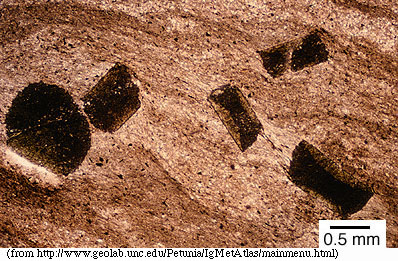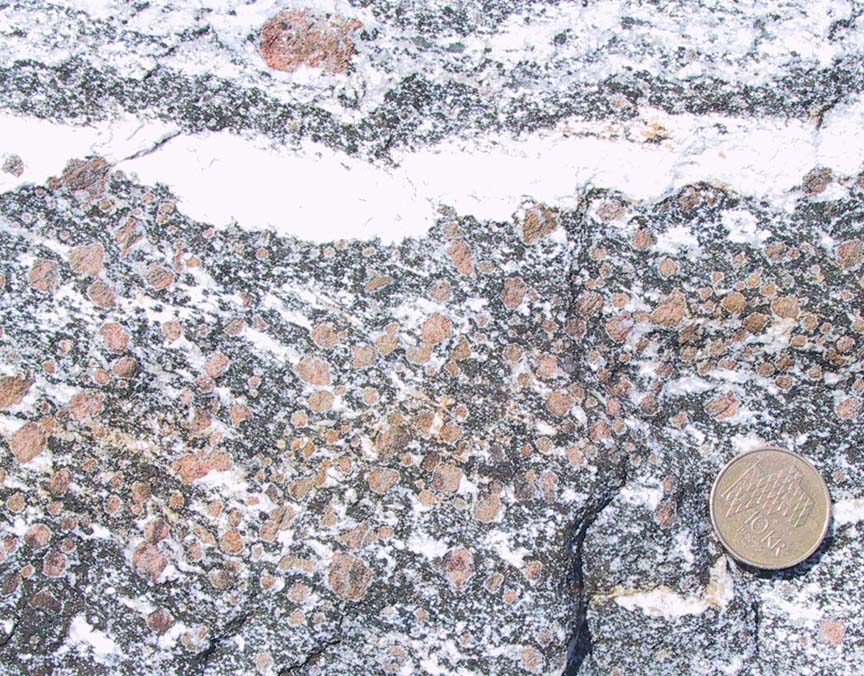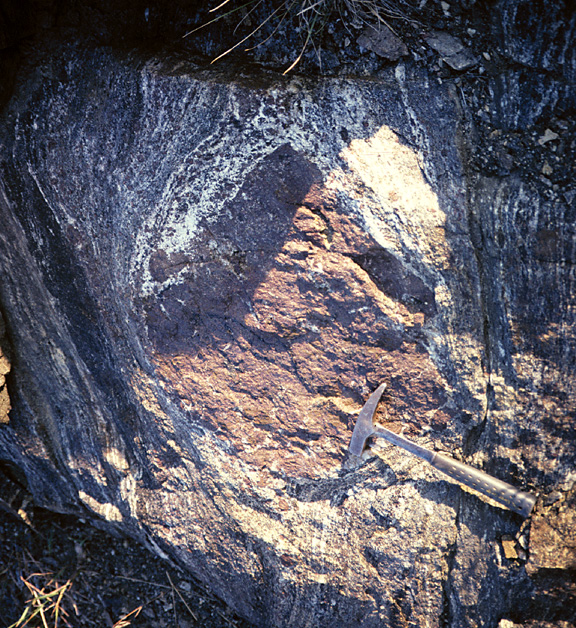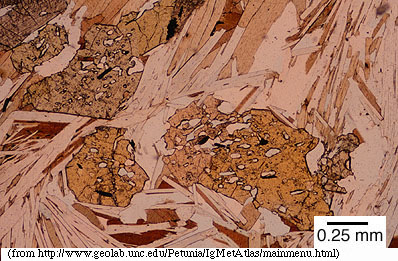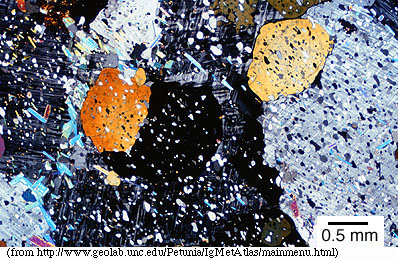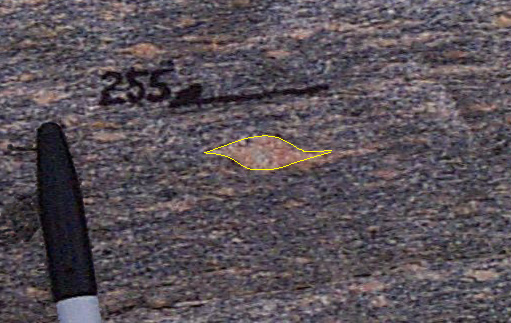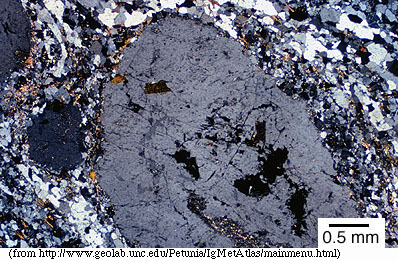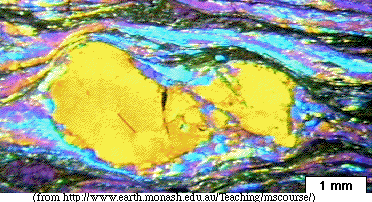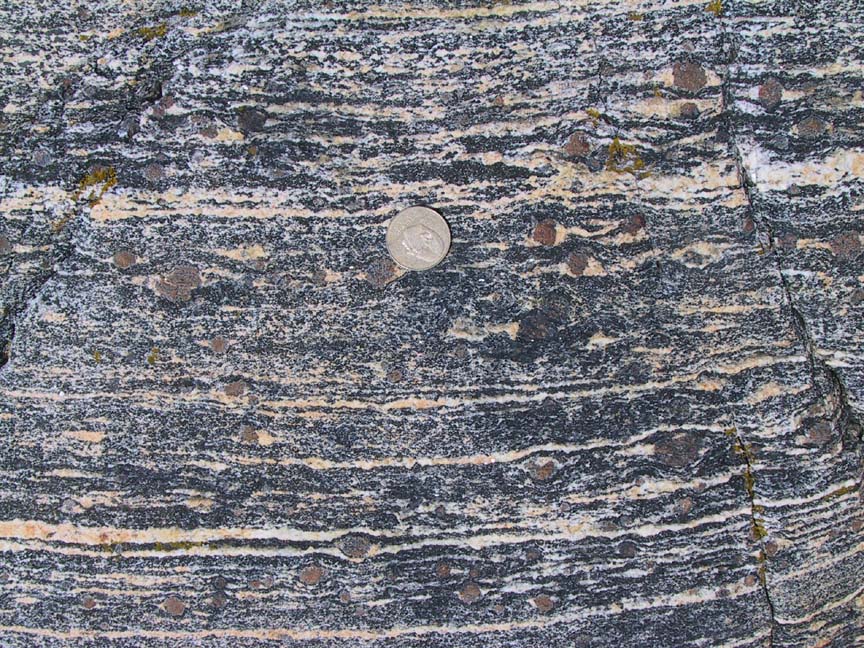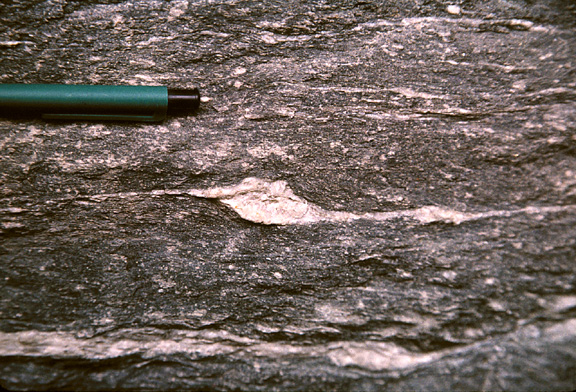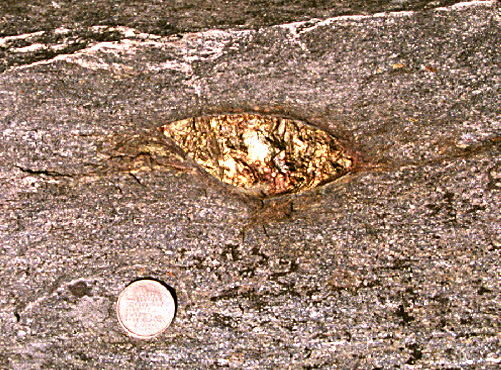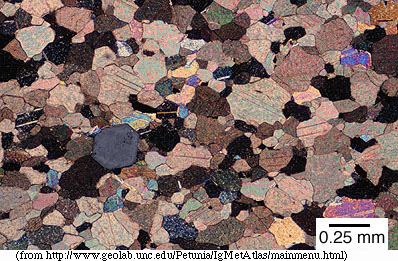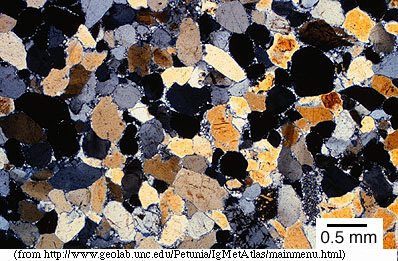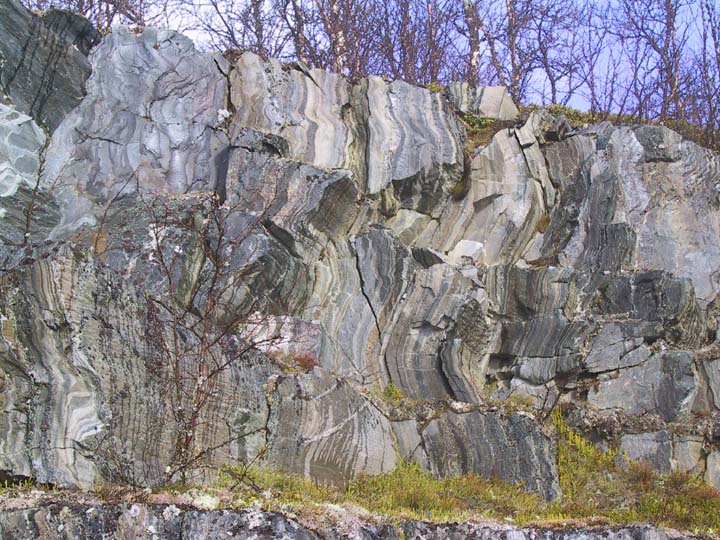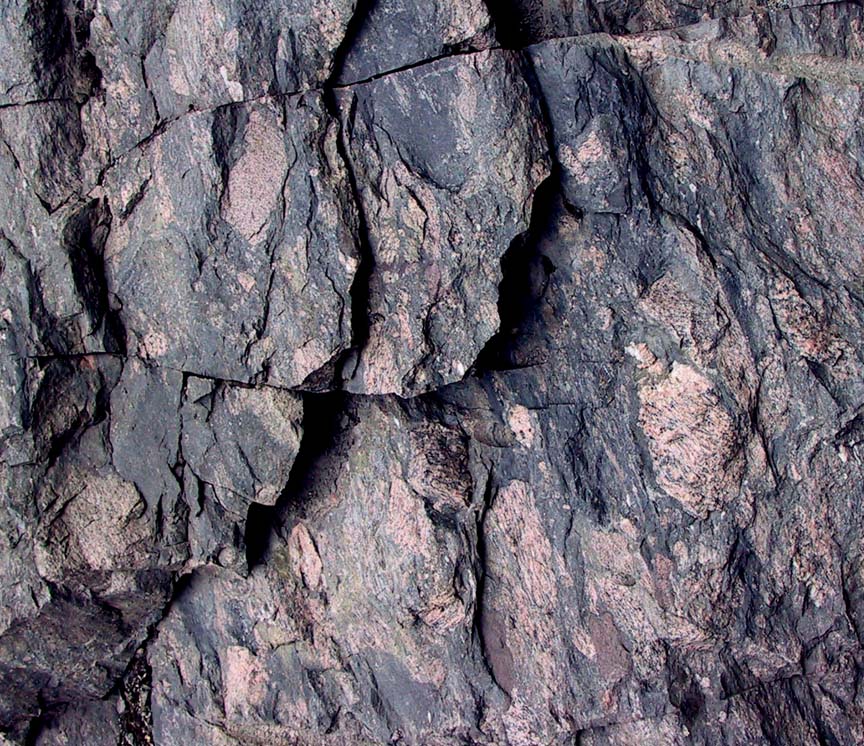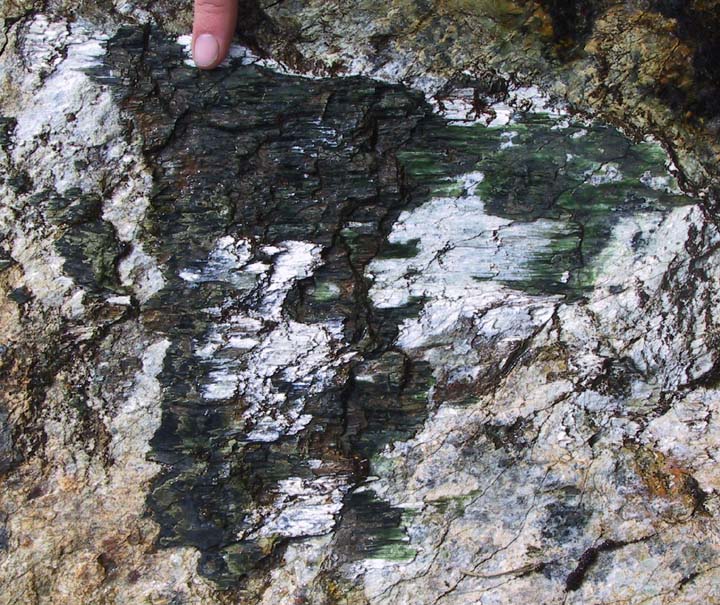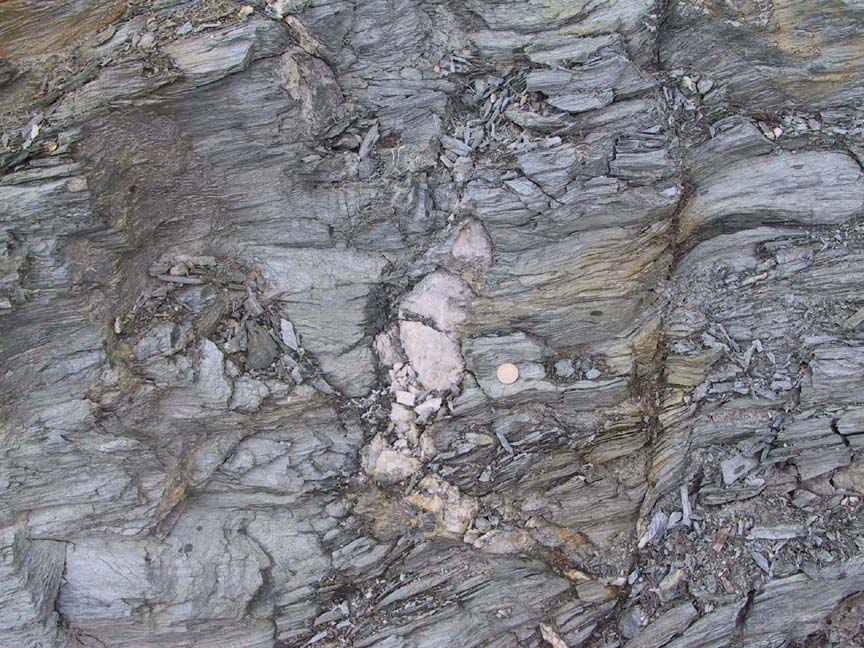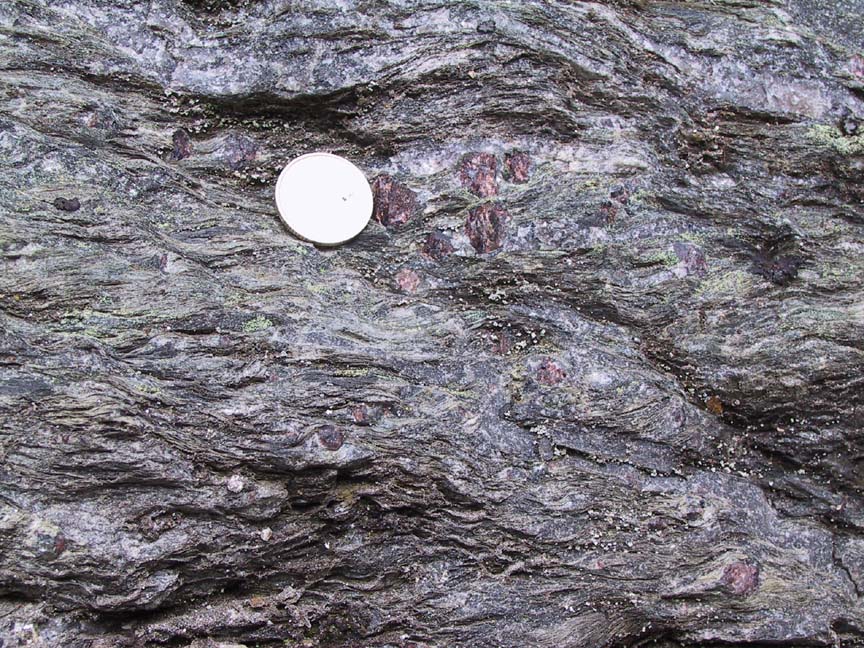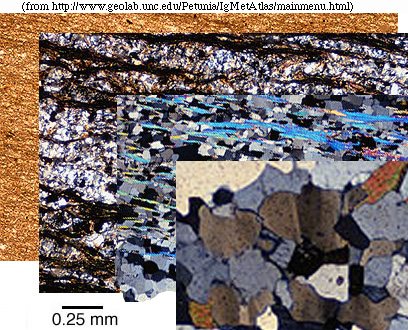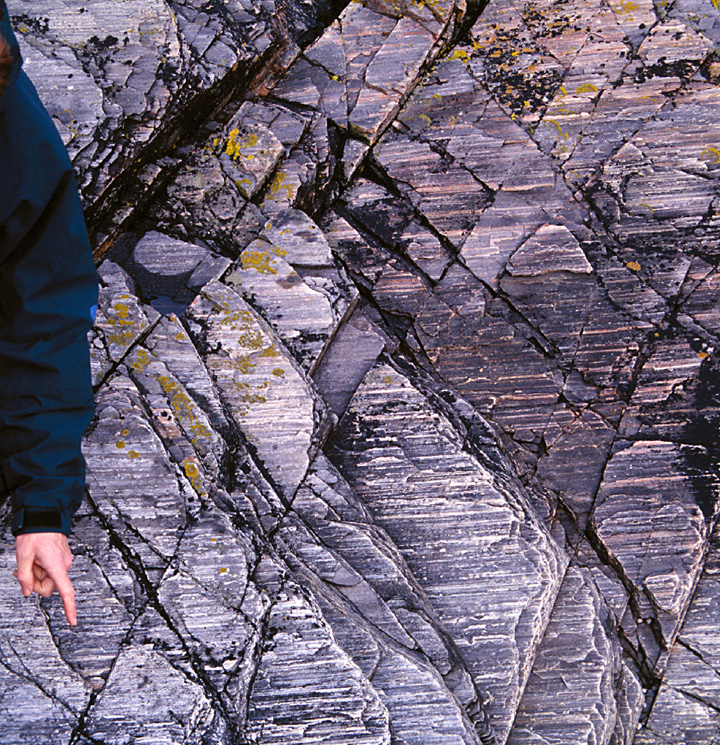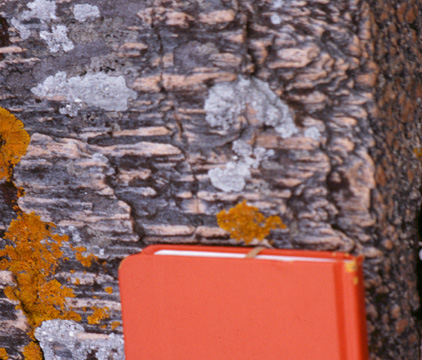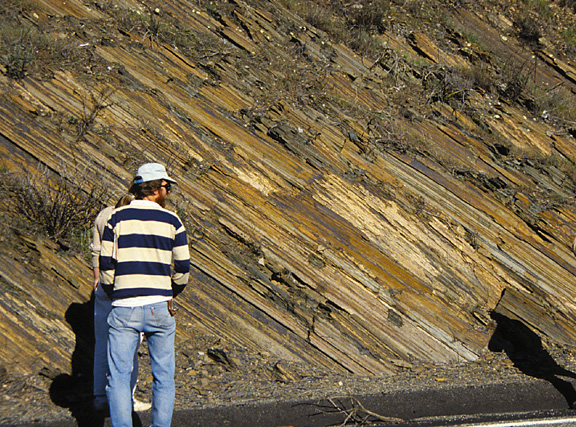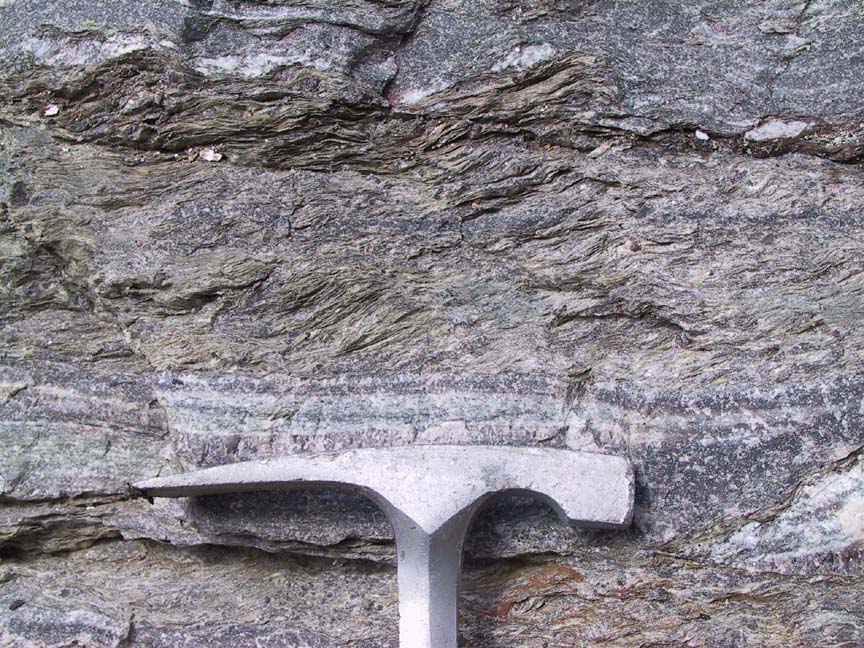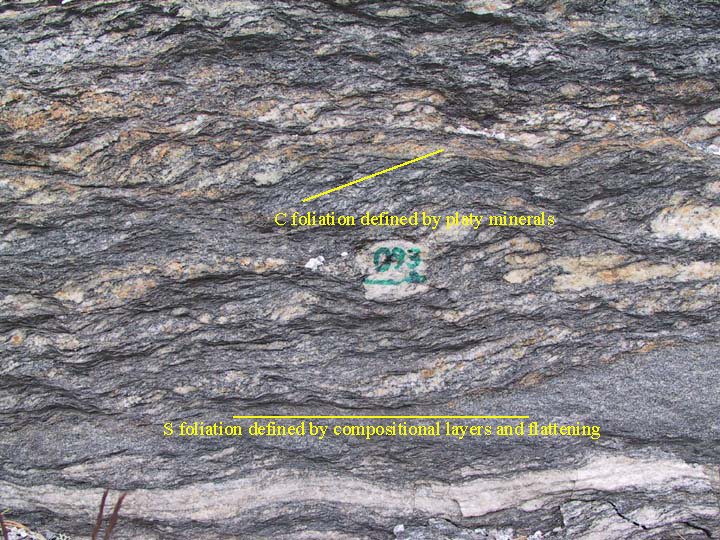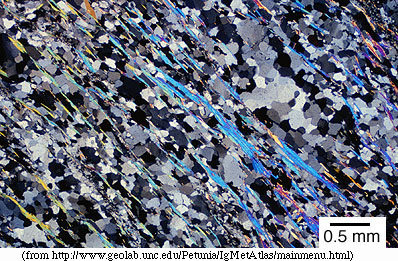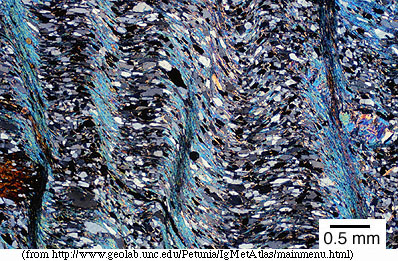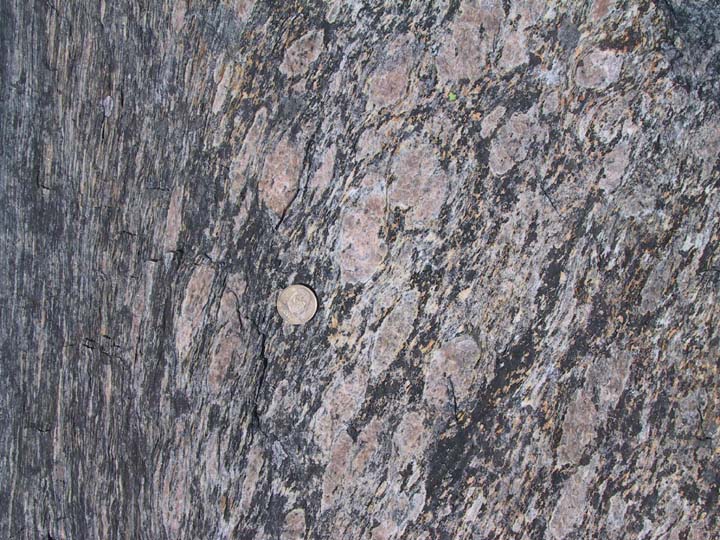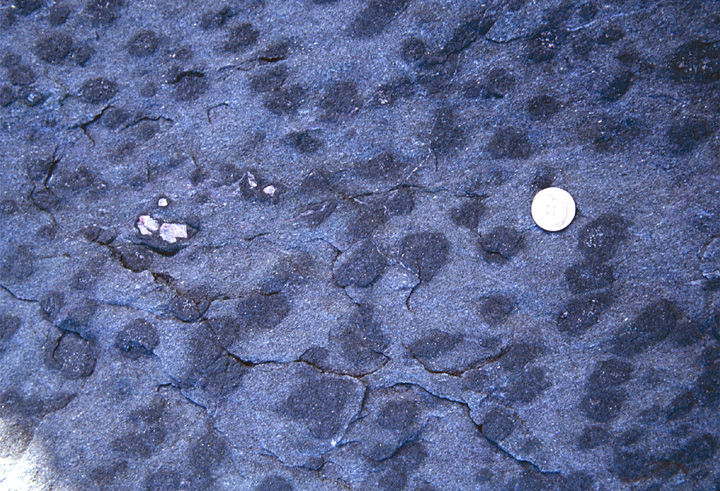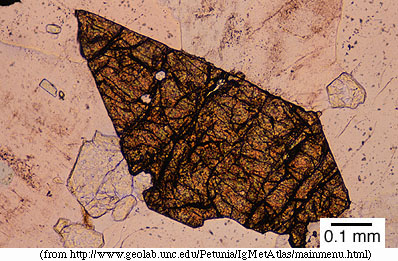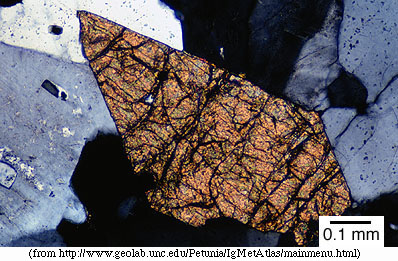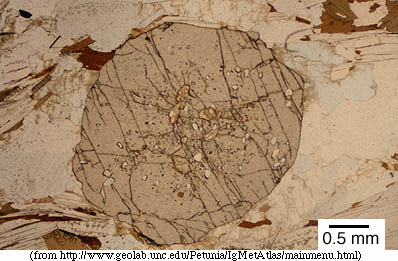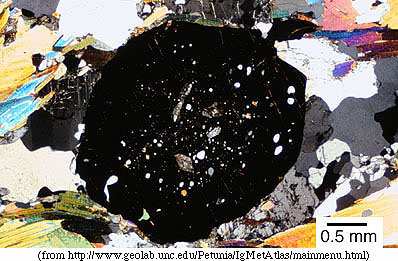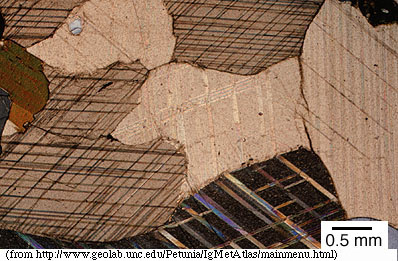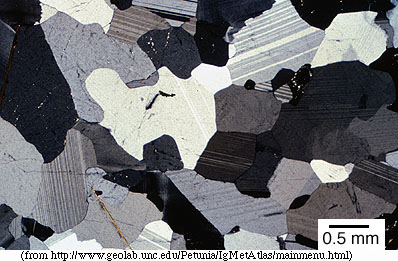 | Metamorphism |
porphyroblast: a grain that has grown larger than others (typical examples are garnet, staurolite, chloritoid, andalusite). The following image shows chloritoid (a hydrous Mg-Fe-Al silicate typical of low-grade pelites)--notice the characteristic i) tabular shape, ii) sector zoning, and iii) growth in a fine-grained (thus low-grade) rock |
Garnet porphyroblasts |
garnet from the Tobacco Root Mountains of Montana |
poikiloblast: a grain with inclusions of other minerals--also called ''sieve'' texture (typical examples are garnet, staurolite, cordierite, andalusite). The image shows staurolite (a hydrous Mg-Fe-Al silicate typical of medium-pressure metapelites)-- the characteristic - yellow color |
Poikiloblasts:cordierite (a hydrous Mg-Fe-Al silicate typical of low-pressure metapelites), with its abundant inclusions, low birefringence, and polysynthetic |
porphyroclast: a relict grain that is larger than others surviving in a deformed rock. The key difference between porphyroblast and porphyroclast is that porphyroblasts are bigger than surrounding grains because of growth, whereas porphyroclasts are bigger because surrounding grains have undergone grainsize reduction during deformation. The image show K-feldspar grains |
Porhyroclasts: K-feldspar grains |
Porhyroclasts: K-feldspar grains |
Garnet Gneiss |
Sigma clasts can be used to determine sense of shear. This sigma clast from Norway shows sinistral (left-lateral) shear |
This is one of the most unusual sigma clasts known (it is an enormous pyrite grain) |
limestone �> marble (the characteristic - high birefringence and twinning) |
Textural Changes with increasing metamorphism, the protolith undergoes increasing recrystallization and fabric change. quartz arenite �> quartzite (notice the characteristic low birefringence) |
a metaquartzite |
a metaconglomerate |
ultramafic rock �> serpentinite |
shale �> slate �> phyllite �> schist �> gneiss �> melt. Shale is a sedimentary term. Slate refers to a fine-grained, low-grade metasedimentary rock in which bedding is typically still visible |
Schist refers to a medium- to high-grade, medium- to coarse-grained metamorphic rock of any composition that has a fabric |
Gneiss refers to a high-grade, coarse-grained metamorphic rock of any composition that has a fabric |
Complex and blobby plutonic complexes can become extremely layered as a result of deformation |
lineation: a linear fabric; typically defined by either linear minerals, such as hornblende, or stretched grains, such as quartz. Rocks with purely linear fabrics are called L tectonites and form by a constrictional deformation (prolate strain ellipsoid). Here is a mylonitic granite from Norway, with clearly stretched K-feldspar grains in a fine-grained matrix of quartz, plagioclase, and biotite |
up close |
The cleavage can be very planar, like in this slate from the Sierra Nevada foothills - Mariposa slate |
The cleavage can be wavy, like in this Tibetan rock |
In favorable circumstances one can determine sense of shear |
the micas that form foliations and cleavages are clearly visible -foliation, shist |
crenulation cleavage: a special kind of cleavage that forms as a result of shortening at a low angle to a pre-existing cleavage |
gneissic: foliation of equant minerals such as feldspar and quartz. Most commonly used to describe high-grade metaplutonic rocks such as granulite gneisses.A Rapikivi granite being turned into a gneiss (Norway). |
pseudomorph: replacement of one phase by another, generally preserving shape. This Norwegian rock shows chlorite pseudomorphs after garnet -pseudogarnet |
idioblastic: sharp crystal form (euhedral in igneous terminology). The mineral shown is sphene (CaTiSiO5), with its characteristic high relief and extreme birefringence -sphene |
|
hypidioblastic: intermediate form (subhedral in igneous terminology). The mineral shown is garnet ((Mg,Fe,Ca,Mn)3Al2Si3O12), with its characteristic high relief and optical isotropy -porphyroblast |
Porphyroblast |
xenoblastic: no clear crystal form (anhedral in igneous terminology). The image on the left shows calcite (CaCO3), with high birefringence and twinning, and the image on the right is of plagioclase ((NaAlSi3O8-CaAlSi2O8), with low birefringence and twinning |
Granoblastics |
from - http://www.geol.ucsb.edu/faculty/hacker/geo102C/lectures/part2.html
paragneiss: a metasedimentary gneiss.
orthogneiss: a meta-igneous gneiss
foliation: a planar fabric; typically defined by platy minerals such as mica or flattened grains such as quartz. This is a more general term that encompasses cleavage and schistosity. Rocks with purely planar fabrics are called S tectonites and form by a flattening deformation (oblate strain ellipsoid). Most metamorphic rocks are L-S tectonites that form from a more general strain history
cleavage: a foliation formed by platy minerals such as mica. Most commonly used to describe low-grade micaceous (pelitic) rocks such as slate.
schistosity: a foliation that is lumpier than cleavage; typically formed by a combination of platy minerals and more equant phases such as feldspar and quartz. Most commonly used to describe medium-grade rocks such as schists of nearly any bulk composition.
Physical Processes of Metamorphism
Diffusion, thermobarometry and thermodynamics
Pelitic rocks
Mafite-Ultramafite
Metamorphism and Deformation
